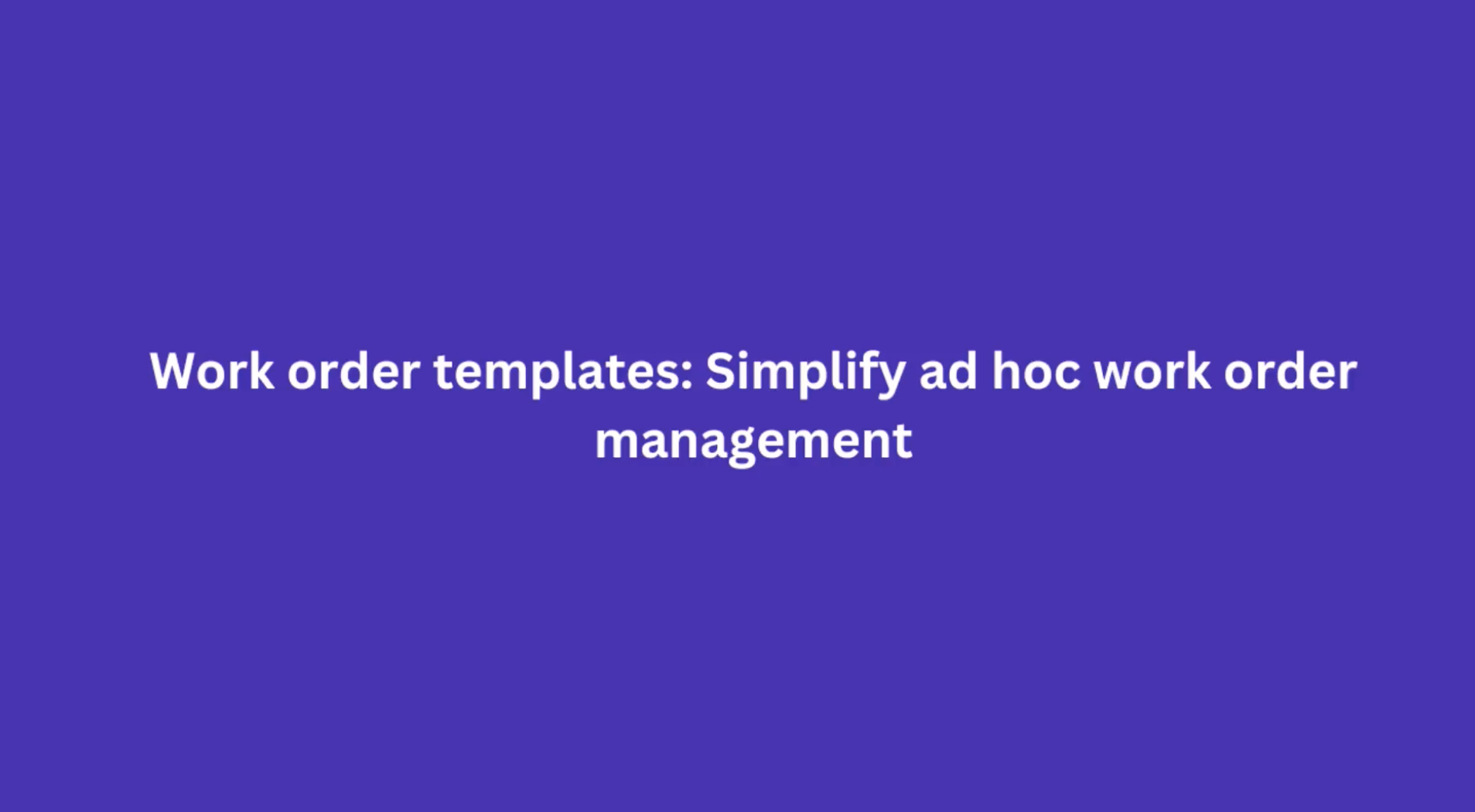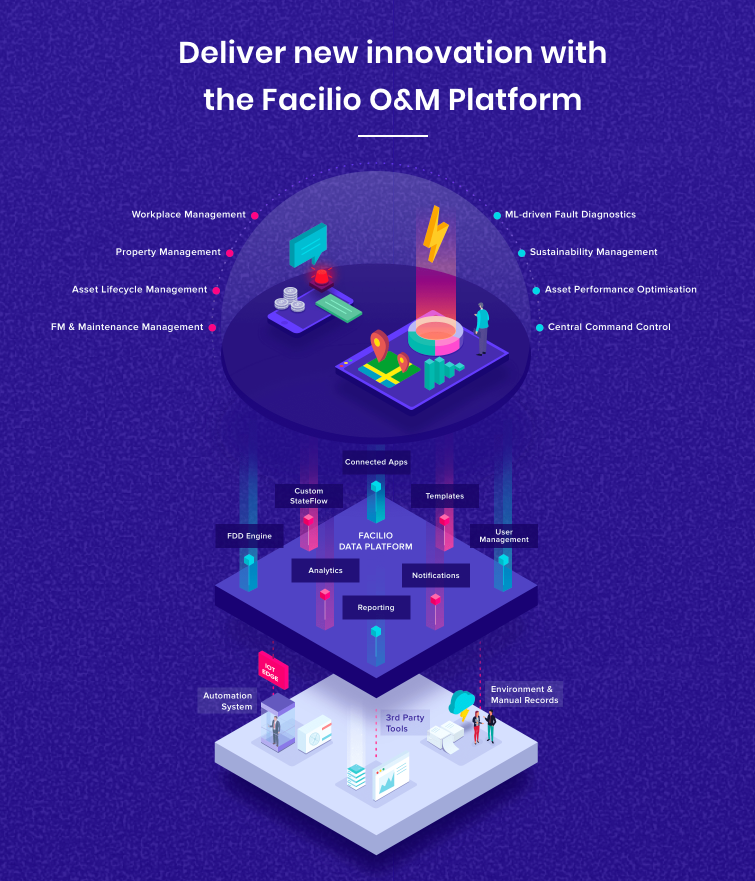9 Reasons Why Field Workforce Management Needs to be a Part of Your CaFM
Field workforce management is the process of coordinating and overseeing the tasks performed by a team of field service.
It involves scheduling, dispatching, tracking, and optimizing the performance of these technicians to ensure efficient service delivery and customer satisfaction.
However, managing a field workforce comes with its own set of challenges.
Dispatching technicians quickly and effectively while ensuring they possess the right skills for the job is often a daunting task.
Maintaining real-time visibility of field operations, tracking time and attendance, and ensuring seamless communication between the office and the field can be overwhelming for FSM providers.
Even with existing field service management solutions, many providers still face inefficiencies. These solutions often act as mere band-aids for deeper, systemic issues.
They fail to offer comprehensive answers and tend to be reactive rather than proactive. They might streamline certain aspects temporarily but don’t address the root cause, resulting in persistent inefficiencies and subpar service quality.
What is truly needed is a robust, end-to-end solution that goes beyond patchwork fixes to reimagine the entire field service management process.
A disparate state of field workforce management
Facility management encompasses the intricacies of managing a multifaceted facility service. Handling ever-shifting service orders and appointments while maintaining a high level of service quality is a relentless task.
Effective dispatching, ensuring real-time tracking of field agents, optimizing workforce skills, and the imperative need for meticulous time and attendance tracking pose constant hurdles.
Additionally, facility service teams must navigate through:
- Overcoming communication barriers between dispatchers, technicians, and administrative staff.
- Managing high volumes of data from various sources in real-time.
- Balancing the allocation of resources to ensure maximum efficiency without overburdening any single technician or team.
- Meeting stringent service-level agreements (SLAs) and ensuring client satisfaction consistently.
With the constant evolution in building technologies and the integration of IoT devices, the expectations and demands from clients are higher than ever.
The cost you incur when your FSM is not a part of your CaFM
The vulnerabilities of existing Field Service Management (FSM) systems can substantially hinder operational performance of facility management service providers (FMSPs). Current FSM systems frequently suffer from:
- Scattered service orders and appointments
- Effective dispatching issues
- Lack of real-time field agent tracking
- Optimizing the skill set of workforce
- Tracking time and attendance effectively
Challenges in managing service orders and appointments
In traditional FSM systems, managing a constant flow of service orders and appointments while maintaining service quality is a daunting task. For instance, consider a heating and cooling services company that receives multiple service requests daily.
With an outdated FSM, orders are frequently missed or double-booked, resulting in poor customer satisfaction and operational inefficiencies. This complexity demands a robust, automated field service scheduling system that adapts in real-time and reduces the administrative burden on service managers.

Effective dispatching issues
Effective dispatching is crucial for timely issue resolution. A common problem with older FSM solutions is the lack of an intelligent dispatch console.
A plumbing service may struggle to assign the closest available technician to an urgent leak, leading to prolonged customer downtime and potential damage, ultimately even churn. Such scenarios highlight the need for FSM systems that match jobs to technicians based on location, skills, and availability, ensuring quick service delivery.
Ensuring real-time tracking of field agents
Real-time tracking of field agents plays a vital role in service efficiency. Existing solutions often fail to provide real-time updates, making it difficult to monitor field agents' locations and job statuses.
When a FMSP relies heavily on fragmented or outdated tools, they may not have enough information to confirm whether a technician is enroute to a critical job, leading to instances where back-office personnel chase after technicians on calls while trying to deal with an already annoyed customer.
FSM systems with real-time tracking capabilities offer dynamic updates, improving transparency and responsiveness that result in happy customers and engaged employees.
Optimizing the skill set of field workforce
Matching the right job with the right skill set is paramount but challenging in many FSM systems.
Consider a telecommunications firm needing specialists for different types of network issues. Without a system that categorizes technicians based on their skills and experience, the wrong technician might be dispatched, leading to inefficient job execution, multiple visits, skyrocketing service requests, and ultimately increased costs.
Time and attendance tracking
Accurate time and attendance tracking is indispensable for both operational efficiency and fair employee compensation. Many traditional FSMs fall short in this area, relying on manual entries that are prone to errors.
You may even struggle to keep accurate records of technicians' working hours, affecting payroll accuracy and job costing. FSM systems integrated with automated time tracking can mitigate these issues, ensuring precise and transparent tracking of work hours.
Not all field workforce management solutions are built equally
A connected field mobile workforce management solution that takes on a platform approach helps consolidate various functionalities and data into a unified system, providing a cohesive and efficient solution for managing a mobile workforce.
Here are some key advantages of choosing a connected FSM platform like Facilio for your mobile workforce management:
1. Dynamic service scheduling: Transforms service request management using advanced scheduling algorithms and real-time collaboration, ensuring accurate service appointments booking and effective deployment of field teams.
2. Intelligent workforce dispatching: Connected FSM simplifies dispatch processes by matching the right technician to each job based on location, skills, and performance history. Intelligent dispatching minimizes travel time, reduces operational costs, and accelerates job completion rates, improving service quality.
3. Streamlined inventory management: FSM solutions that come with a connected CaFM come will help make sure that your field team always has the right parts available. Managing storage, transfers, and inventory consumption seamlessly, it reduces downtime and ensures uninterrupted service delivery.
4. Streamline documentation: Accurate and efficient billing will become a way of life with Facilio FSM. From automating calculations to streamlining the approval workflows, a connected CaFM will pave the way for timely, accurate invoices.
5. Remote command and control: Enables real-time monitoring and management of field operations, allowing managers to oversee multiple sites from a central location.
6. Portfolio visibility and benchmarking: Provides comprehensive insights into the performance of different assets and facilities, facilitating informed decision-making and performance comparisons across the portfolio.
7. System trend analysis: Utilizes historical and real-time data to identify patterns and trends, helping organizations anticipate issues and optimize operations proactively.
8. Efficiency-based optimization: Enhances resource allocation and operational efficiency by leveraging data-driven insights to streamline processes and reduce waste.
9. Space and asset insights: Offers detailed information on space utilization and asset performance, enabling better maintenance management of physical resources.
Top field workforce management software solutions
Choosing the right field workforce management software can significantly enhance productivity, reduce costs, and improve service quality. Below, we present some of the best software solutions to address your needs:
Facilio
Facilio is at the forefront of field workforce management software with its modern, connected CaFM platform. It seamlessly integrates hard and soft FM services, offering real-time visibility, optimized resource allocation, and automated compliance reporting.
Facilio's platform-first approach ensures strategic decision-making capabilities for O&M teams and enhances the overall efficiency of facilities management.

Pros
- Enhanced CaFM Capabilities: Facilio FSM is a natural extension of CaFM, optimized for mobile workforce teams focused on repair and replacement services.
- Optimized Inventory Management: Intelligence-led incident reports and min-max planning help in reducing unnecessary inventory and minimizing stock outs.
- Streamlined Dispatch Operations: Intuitive dispatch console enhances operational efficiency and increases first-time fix rates, directly impacting revenue.
- Automated Compliance Reporting: Generates compliance reports automatically, easing adherence to regulations and reducing administrative burdens.
- Comprehensive Performance Analytics: Automates dispatch tickets based on conditions, ensuring proactive fault resolution.
- Improved Customer Satisfaction: Optimized scheduling and task allocation enhance service levels, driving customer satisfaction and delivery consistency.
- Proactive Resource Allocation: Predictive analytics and real-time tracking ensure effective resource allocation and productivity maximization.
Cons
- The lack of sandbox features to build and play around with tools before going live.
- The platform's setup and language are specifically tailored for Facility Managers and Technical Service Managers, rather than other management disciplines.
ServiceMax
Known for its robust capabilities, ServiceMax focuses on optimizing workforce productivity and service effectiveness.
It provides Field Service Technicians with comprehensive visibility into their workload. The platform serves as a centralized hub for completing service reports, ordering spare parts, viewing upcoming preventive maintenance schedules, and staying informed about technical updates on instruments.
Pros
- Intuitive interface
- Comprehensive asset management
- Robust resource allocation capabilities
Cons
- ServiceMax configuration needs some type of versioning or configuration tracking.
- It also needs an audit trail of who changed what and when with role-based access control.
- The Preventive Maintenance plans and triggering PM Work Orders process needs to be simplified.
FieldEdge
FieldEdge automates numerous daily operational tasks for service businesses. It excels in tracking marketing performance, setting up new service calls via dispatchers, and keeping technicians informed about job details. It also supports invoicing, quoting, maintaining historical records, and uploading photos.
Pros
- Customization capabilities
- Simple, intuitive interface
- Caters to the needs of various stakeholders
Cons
- Lack of historical customer interaction data
- Inability to generate reports in multiple formats
- Broken customer support approach

mHelpDesk
mHelpDesk is recognized for its user-friendly interface and comprehensive field service management tools. It allows for seamless task coordination, tracking, and reporting, ensuring that field teams can operate efficiently without administrative burdens.
Pros
- Calendar integration with Google
- Invoicing and revenue tracking
- QuickBooks and other third-party integrations
Cons
- Lack of a holistic communication logging module
- Inability to switch between or have multiple invoice templates
- Basic reporting functionalities and lack of deep insights
Housecall Pro
Housecall Pro is a well-known field service management solution. The best part is its rule-based automated workflows which keep all stakeholders, including the customers, informed and within the loop.
It eliminates manual data entry and redundancy with seamless API connections, playing well with all third-party applications from HRMS to accounting tools.
Pros
- Intuitive module and lack of learning curve
- Helpful customer support
- Flexibility, automated emails, and estimates
Cons
- Reporting module leaves much to be desired
- Lack of several out-of-the-box integrations
Final thoughts
The landscape of field workforce management in the Middle East presents challenges for Integrated Facilities Management (IFM) service providers. System silos, fragmented technologies, and complex inventory and dispatch operations can be overwhelming.
However, adopting connected mobile workforce management through a platform approach enhances efficiency and agility. By integrating disparate technologies and providing seamless interoperability, connected FSM tools like Facilio centralizes operations and augments existing systems.
Facilio offers everything you need for mobile workforce management and much more with its platform capabilities. Learn more about its capabilities on our solutions page.


